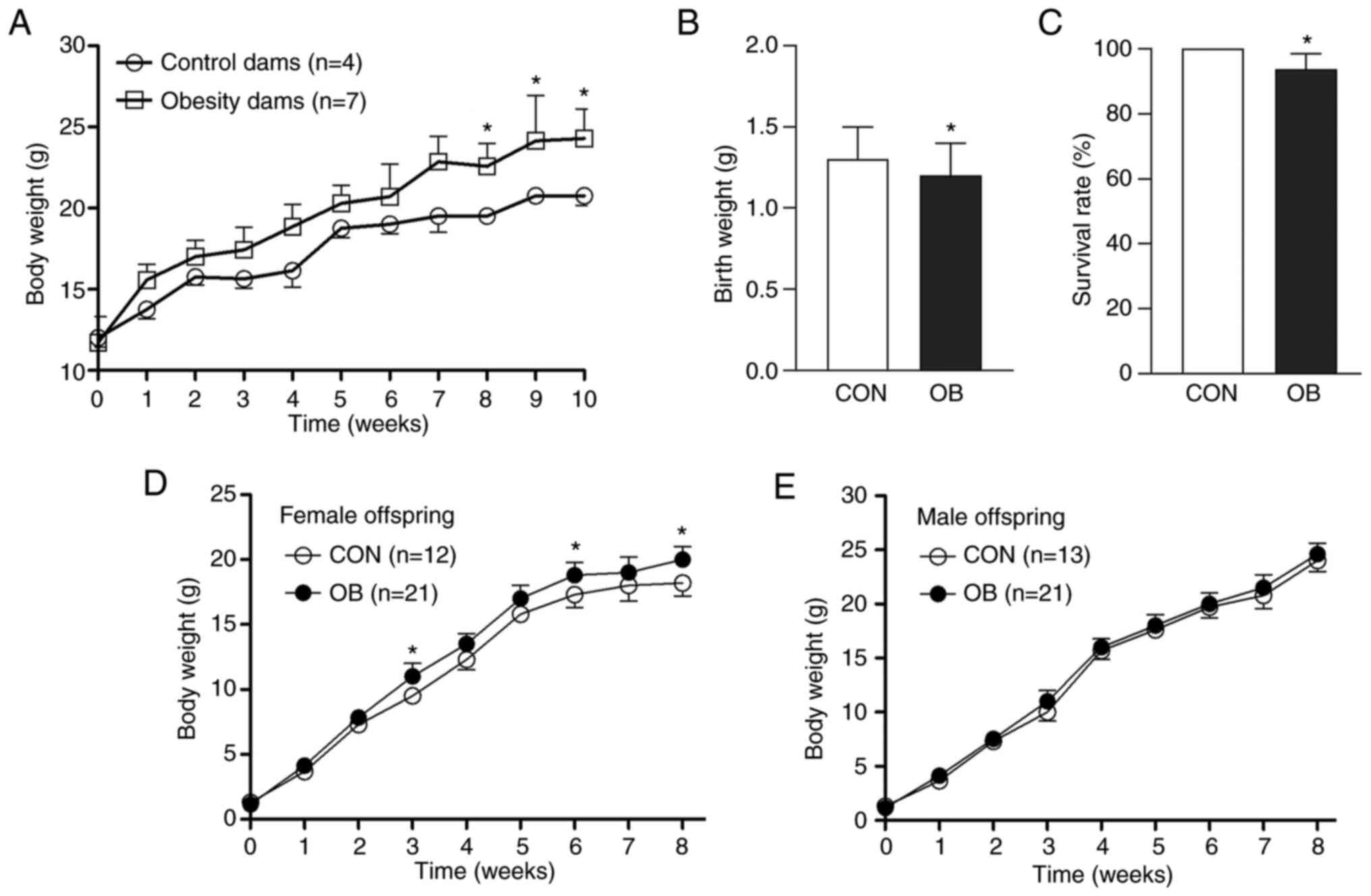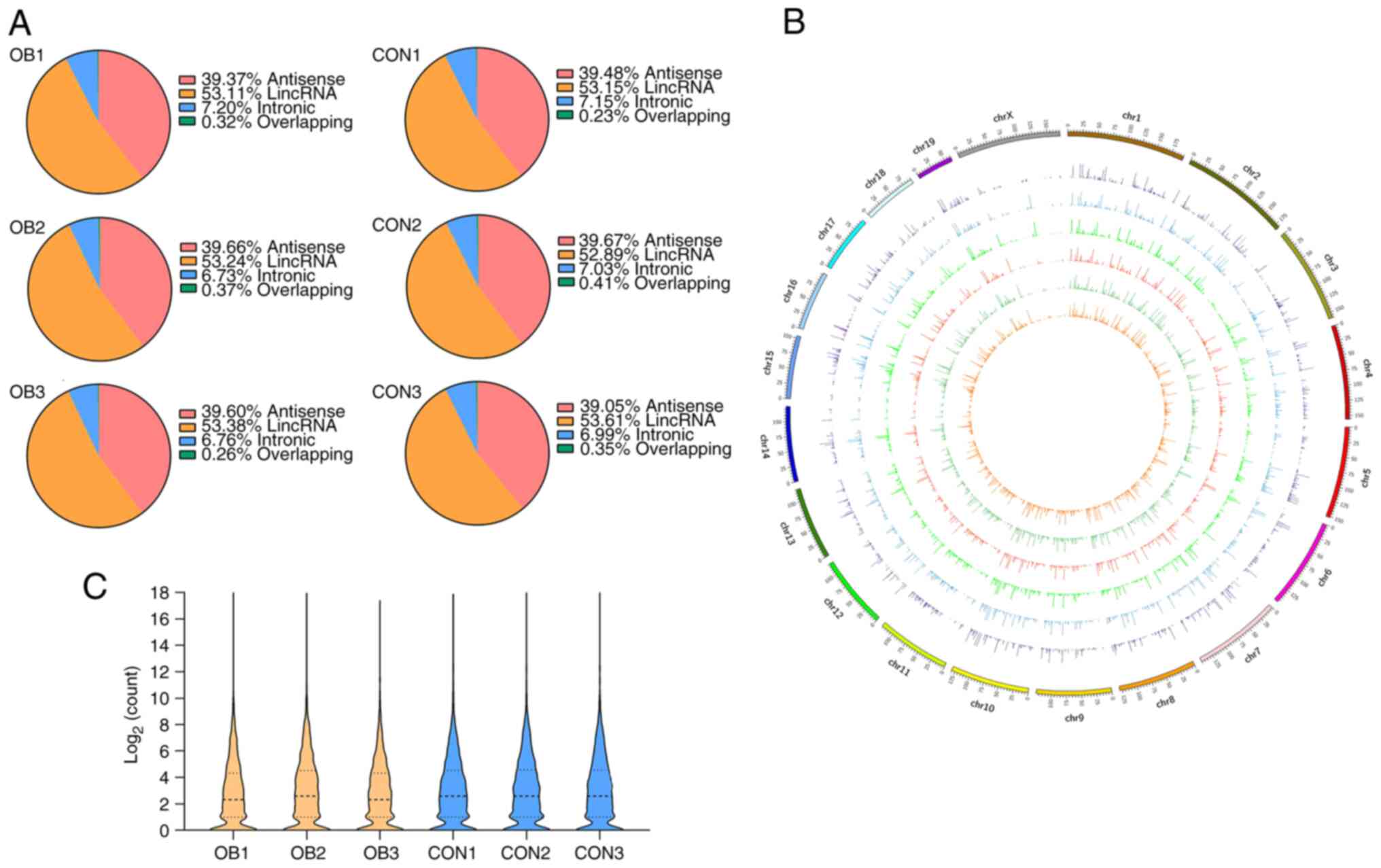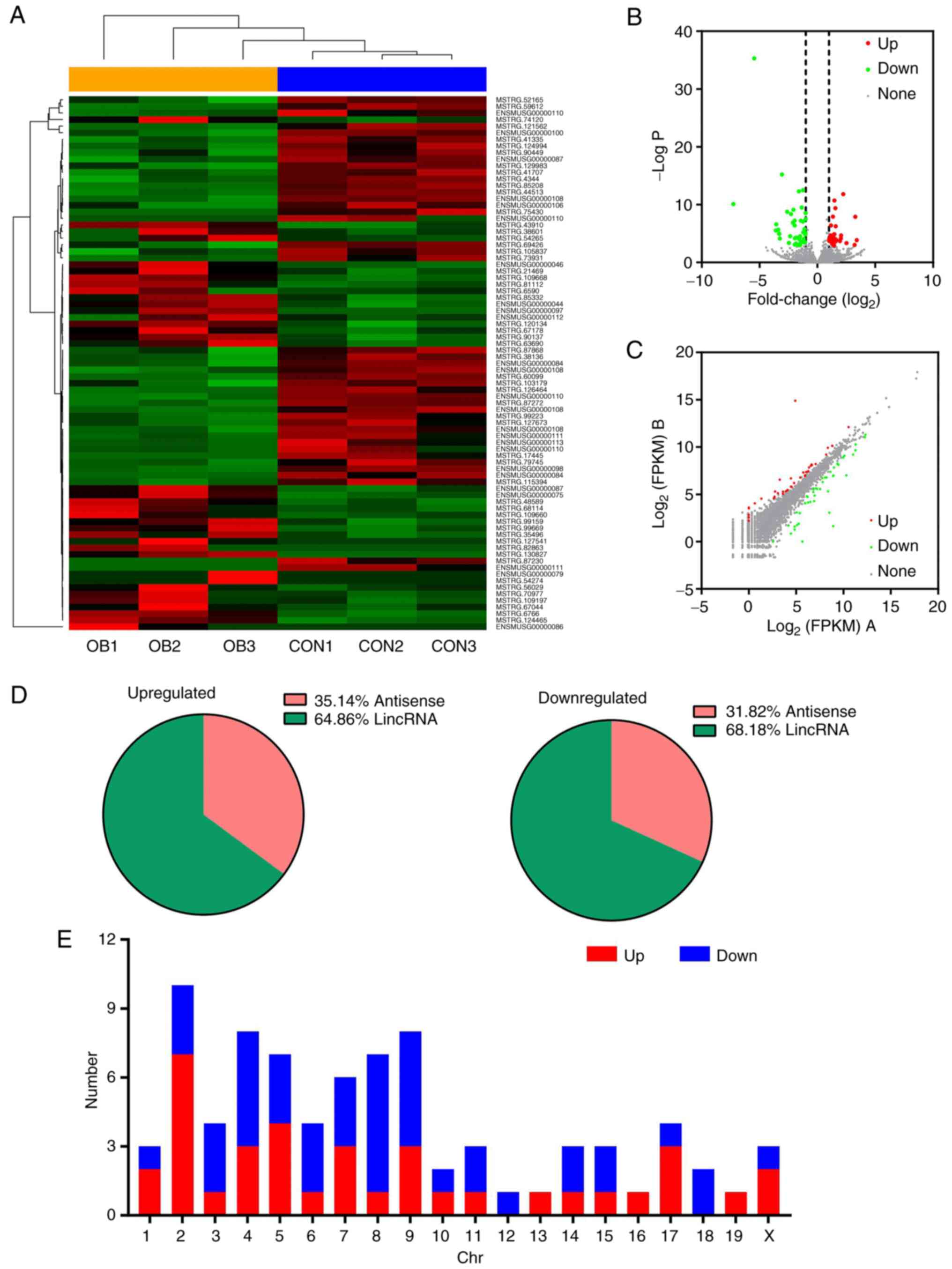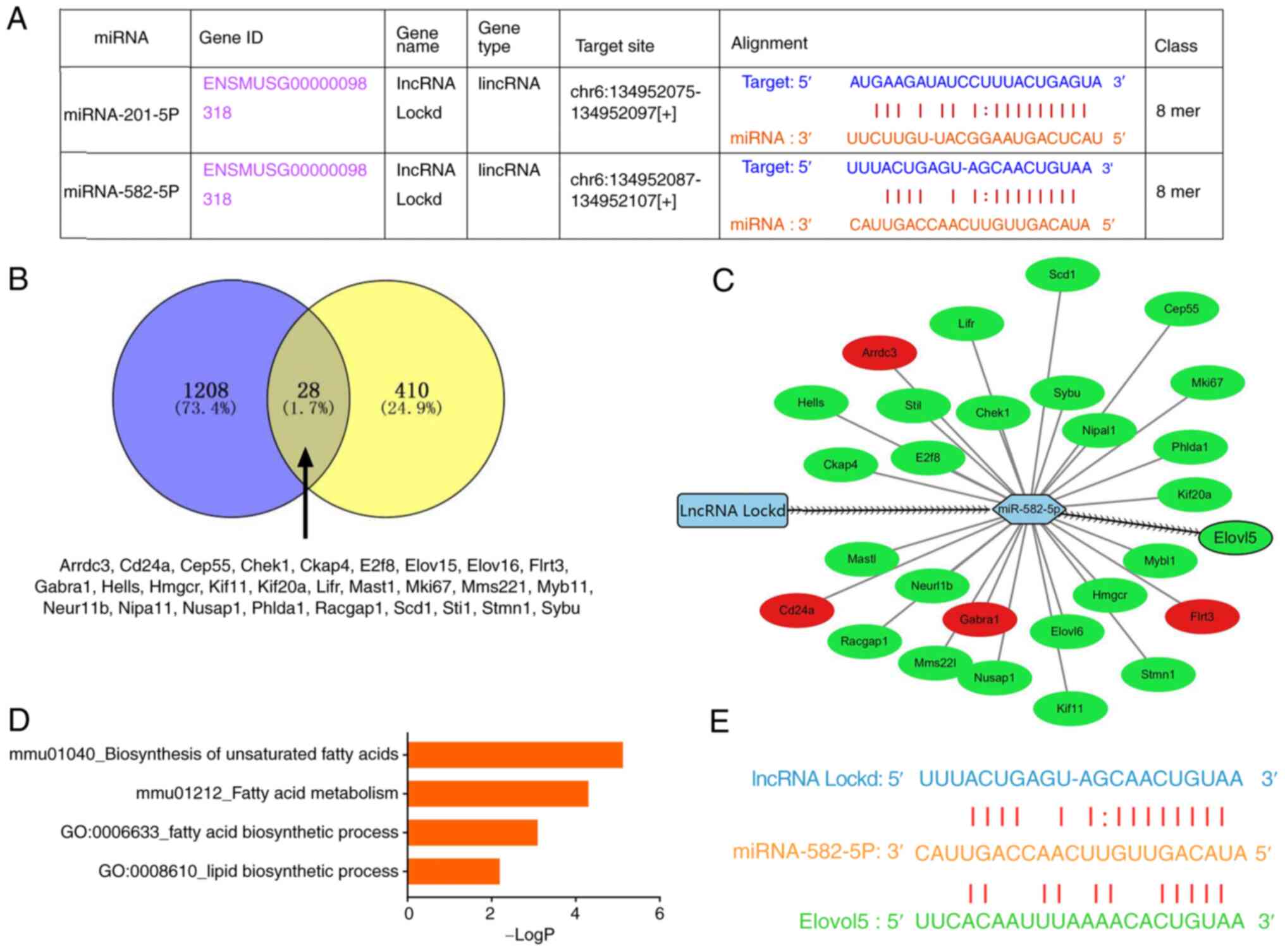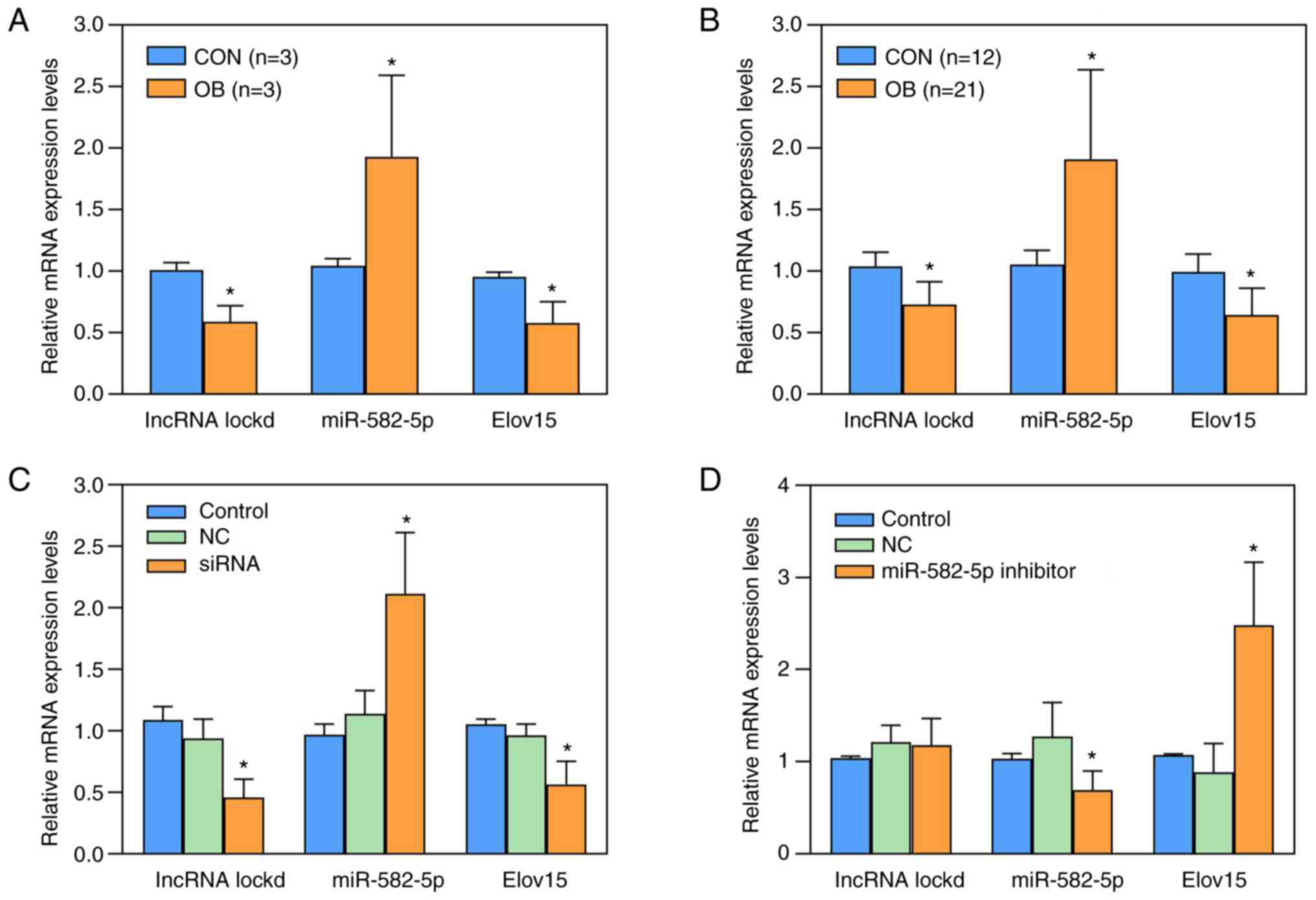|
1
|
NCD Risk Factor Collaboration (NCD-RisC).
Worldwide trends in body-mass index, underweight, overweight, and
obesity from 1975 to 2016: A pooled analysis of 2416
population-based measurement studies in 128.9 million children,
adolescents, and adults. Lancet. 390:2627–2642. 2017.PubMed/NCBI View Article : Google Scholar
|
|
2
|
Catalano PM and Shankar K: Obesity and
pregnancy: Mechanisms of short term and long term adverse
consequences for mother and child. BMJ. 356(j1)2017.PubMed/NCBI View
Article : Google Scholar
|
|
3
|
Koletzko B, Godfrey KM, Poston L,
Szajewska H, van Goudoever JB, de Waard M, Brands B, Grivell RM,
Deussen AR, Dodd JM, et al: Nutrition during pregnancy, lactation
and early childhood and its implications for maternal and long-term
child health: The early nutrition project recommendations. Ann Nutr
Metab. 74:93–106. 2019.PubMed/NCBI View Article : Google Scholar
|
|
4
|
Jaacks LM, Vandevijvere S, Pan A, McGowan
CJ, Wallace C, Imamura F, Mozaffarian D, Swinburn B and Ezzati M:
The obesity transition: Stages of the global epidemic. Lancet
Diabetes Endocrinol. 7:231–240. 2019.PubMed/NCBI View Article : Google Scholar
|
|
5
|
Symonds ME, Sebert SP, Hyatt MA and Budge
H: Nutritional programming of the metabolic syndrome. Nat Rev
Endocrinol. 5:604–610. 2009.PubMed/NCBI View Article : Google Scholar
|
|
6
|
Patel MS, Srinivasan M and Laychock SG:
Metabolic programming: Role of nutrition in the immediate postnatal
life. J Inherit Metab Dis. 32:218–228. 2009.PubMed/NCBI View Article : Google Scholar
|
|
7
|
Barker DJ, Gluckman PD, Godfrey KM,
Harding JE, Owens JA and Robinson JS: Fetal nutrition and
cardiovascular disease in adult life. Lancet. 341:938–941.
1993.PubMed/NCBI View Article : Google Scholar
|
|
8
|
Lucas A: Programming by early nutrition:
An experimental approach. J Nutr. 128 (Suppl 2):401S–406S.
1998.PubMed/NCBI View Article : Google Scholar
|
|
9
|
Yan X, Hu Z, Feng Y, Hu X, Yuan J, Zhao
SD, Zhang Y, Yang L, Shan W, He Q, et al: Comprehensive genomic
characterization of long non-coding RNAs across human cancers.
Cancer Cell. 28:529–540. 2015.PubMed/NCBI View Article : Google Scholar
|
|
10
|
Chen G, Yu D, Nian X, Liu J, Koenig RJ, Xu
B and Sheng L: LncRNA SRA promotes hepatic steatosis through
repressing the expression of adipose triglyceride lipase (ATGL).
Sci Rep. 6(35531)2016.PubMed/NCBI View Article : Google Scholar
|
|
11
|
Yan C, Li J, Feng S, Li Y and Tan L: Long
noncoding RNA Gomafu upregulates Foxo1 expression to promote
hepatic insulin resistance by sponging miR-139-5p. Cell Death Dis.
9(289)2018.PubMed/NCBI View Article : Google Scholar
|
|
12
|
Shan D, Shang Y and Hu T: Long noncoding
RNA BLACAT1 promotes cell proliferation and invasion in human
cervical cancer. Oncol Lett. 15:3490–3495. 2018.PubMed/NCBI View Article : Google Scholar
|
|
13
|
Li Y, Shan Z, Yang B, Yang D, Men C, Cui Y
and Wu J: LncRNA HULC promotes epithelial and smooth-muscle-like
differentiation of adipose-derived stem cells by upregulation of
BMP9. Pharmazie. 73:49–55. 2018.PubMed/NCBI View Article : Google Scholar
|
|
14
|
Sun C, Li S, Zhang F, Xi Y, Wang L, Bi Y
and Li D: Long non-coding RNA NEAT1 promotes non-small cell lung
cancer progression through regulation of miR-377-3p-E2F3 pathway.
Oncotarget. 7:51784–51814. 2016.PubMed/NCBI View Article : Google Scholar
|
|
15
|
Xu J, Bai J, Zhang X, Lv Y, Gong Y, Liu L,
Zhao H, Yu F, Ping Y, Zhang G, et al: A comprehensive overview of
lncRNA annotation resources. Brief Bioinform. 18:236–249.
2017.PubMed/NCBI View Article : Google Scholar
|
|
16
|
Winkle M, Kluiver JL, Diepstra A and van
den Berg A: Emerging roles for long noncoding RNAs in B-cell
development and malignancy. Crit Rev Oncol Hematol. 120:77–85.
2017.PubMed/NCBI View Article : Google Scholar
|
|
17
|
Goyal N, Kesharwani D and Datta M: Lnc-ing
non-coding RNAs with metabolism and diabetes: Roles of lncRNAs.
Cell Mol Life Sci. 75:1827–1837. 2018.PubMed/NCBI View Article : Google Scholar
|
|
18
|
Isganaitis E, Venditti S, Matthews TJ,
Lerin C, Demerath EW and Fields DA: Maternal obesity and the human
milk metabolome: Associations with infant body composition and
postnatal weight gain. Am J Clin Nutr. 110:111–120. 2019.PubMed/NCBI View Article : Google Scholar
|
|
19
|
Motorin Y and Helm M: Methods for RNA
modification mapping using deep sequencing: Established and new
emerging technologies. Genes (Basel). 10(35)2019.PubMed/NCBI View Article : Google Scholar
|
|
20
|
Rego SM and Snyder MP: High throughput
sequencing and assessing disease risk. Cold Spring Harb Perspect
Med. 9(a026849)2019.PubMed/NCBI View Article : Google Scholar
|
|
21
|
Song Y, Li J, Zhao Y, Zhang Q, Liu Z, Li
J, Chen X, Yang Z, Yu C and Xiao X: Severe maternal hyperglycemia
exacerbates the development of insulin resistance and fatty liver
in the offspring on high fat diet. Exp Diabetes Res.
2012(254976)2012.PubMed/NCBI View Article : Google Scholar
|
|
22
|
Subramanian A, Tamayo P, Mootha VK,
Mukherjee S, Ebert BL, Gillette MA, Paulovich A, Pomeroy SL, Golub
TR, Lander ES and Mesirov JP: Gene set enrichment analysis: A
knowledge-based approach for interpreting genome-wide expression
profiles. Proc Natl Acad Sci USA. 102:15545–15550. 2005.PubMed/NCBI View Article : Google Scholar
|
|
23
|
Chuang TD and Khorram O: Expression
profiling of lncRNAs, miRNAs, and mRNAs and their differential
expression in leiomyoma using next-generation RNA sequencing.
Reprod Sci. 25:246–255. 2018.PubMed/NCBI View Article : Google Scholar
|
|
24
|
Mi H, Dong Q, Muruganujan A, Gaudet P,
Lewis S and Thomas PD: PANTHER version 7: Improved phylogenetic
trees, orthologs and collaboration with the gene ontology
consortium. Nucleic Acids Res. 38:D204–D210. 2010.PubMed/NCBI View Article : Google Scholar
|
|
25
|
Livak KJ and Schmittgen TD: Analysis of
relative gene expression data using real-time quantitative PCR and
the 2(-Delta Delta C(T)) method. Methods. 25:402–408.
2001.PubMed/NCBI View Article : Google Scholar
|
|
26
|
Dillies MA, Rau A, Aubert J,
Hennequet-Antier C, Jeanmougin M, Servant N, Keime C, Marot G,
Castel D, Estelle J, et al: A comprehensive evaluation of
normalization methods for Illumina high-throughput RNA sequencing
data analysis. Brief Bioinform. 14:671–683. 2013.PubMed/NCBI View Article : Google Scholar
|
|
27
|
Reichetzeder C: Overweight and obesity in
pregnancy: Their impact on epigenetics. Eur J Clin Nutr.
75:1710–1722. 2021.PubMed/NCBI View Article : Google Scholar
|
|
28
|
Zhao D, Liu Y, Jia S, He Y, Wei X, Liu D,
Ma W, Luo W, Gu H and Yuan Z: Influence of maternal obesity on the
multi-omics profiles of the maternal body, gestational tissue, and
offspring. Biomed Pharmacother. 151(113103)2022.PubMed/NCBI View Article : Google Scholar
|
|
29
|
Liu Z, Lim CY, Su MY, Soh SL, Shui G, Wenk
MR, Grove KL, Radda GK, Han W and Xiao X: Neonatal overnutrition in
mice exacerbates high-fat diet-induced metabolic perturbations. J
Endocrinol. 219:131–143. 2013.PubMed/NCBI View Article : Google Scholar
|
|
30
|
Schoonejans JM and Ozanne SE:
Developmental programming by maternal obesity: Lessons from animal
models. Diabet Med. 38(e14694)2021.PubMed/NCBI View Article : Google Scholar
|
|
31
|
Baker MS, Li G, Kohorst JJ and Waterland
RA: Fetal growth restriction promotes physical inactivity and
obesity in female mice. Int J Obes (Lond). 39:98–104.
2015.PubMed/NCBI View Article : Google Scholar
|
|
32
|
Zhu X, Wu YB, Zhou J and Kang DM:
Upregulation of lncRNA MEG3 promotes hepatic insulin resistance via
increasing FoxO1 expression. Biochem Biophys Res Commun.
469:319–325. 2016.PubMed/NCBI View Article : Google Scholar
|
|
33
|
Zhang X, Gejman R, Mahta A, Zhong Y, Rice
KA, Zhou Y, Cheunsuchon P, Louis DN and Klibanski A: Maternally
expressed gene 3, an imprinted noncoding RNA gene, is associated
with meningioma pathogenesis and progression. Cancer Res.
70:2350–2358. 2010.PubMed/NCBI View Article : Google Scholar
|
|
34
|
Li P, Ruan X, Yang L, Kiesewetter K, Zhao
Y, Luo H, Chen Y, Gucek M, Zhu J and Cao H: A liver-enriched long
non-coding RNA, lncLSTR, regulates systemic lipid metabolism in
mice. Cell Metab. 21:455–467. 2015.PubMed/NCBI View Article : Google Scholar
|
|
35
|
Yan C, Chen J and Chen N: Long noncoding
RNA MALAT1 promotes hepatic steatosis and insulin resistance by
increasing nuclear SREBP-1c protein stability. Sci Rep.
6(22640)2016.PubMed/NCBI View Article : Google Scholar
|
|
36
|
Paralkar VR, Taborda CC, Huang P, Yao Y,
Kossenkov AV, Prasad R, Luan J, Davies JO, Hughes JR, Hardison RC,
et al: Unlinking an lncRNA from its associated cis element. Mol
Cell. 62:104–110. 2016.PubMed/NCBI View Article : Google Scholar
|
|
37
|
Wang F, Liang R, Soibam B, Yang J and Liu
Y: Coregulatory long non-coding RNA and protein-coding genes in
serum starved cells. Biochim Biophys Acta Gene Regul Mech.
1862:84–95. 2019.PubMed/NCBI View Article : Google Scholar
|
|
38
|
Qi X, Zhang DH, Wu N, Xiao JH, Wang X and
Ma W: ceRNA in cancer: Possible functions and clinical
implications. J Med Genet. 52:710–718. 2015.PubMed/NCBI View Article : Google Scholar
|
|
39
|
Tripathy S, Torres-Gonzalez M and Jump DB:
Elevated hepatic fatty acid elongase-5 activity corrects dietary
fat-induced hyperglycemia in obese C57BL/6J mice. J Lipid Res.
51:2642–2654. 2010.PubMed/NCBI View Article : Google Scholar
|
|
40
|
Wang Y, Botolin D, Xu J, Christian B,
Mitchell E, Jayaprakasam B, Nair MG, Peters JM, Busik JV, Olson LK
and Jump DB: Regulation of hepatic fatty acid elongase and
desaturase expression in diabetes and obesity. J Lipid Res.
47:2028–2041. 2006.PubMed/NCBI View Article : Google Scholar
|
|
41
|
Moon YA, Hammer RE and Horton JD: Deletion
of ELOVL5 leads to fatty liver through activation of SREBP-1c in
mice. J Lipid Res. 50:412–423. 2009.PubMed/NCBI View Article : Google Scholar
|















